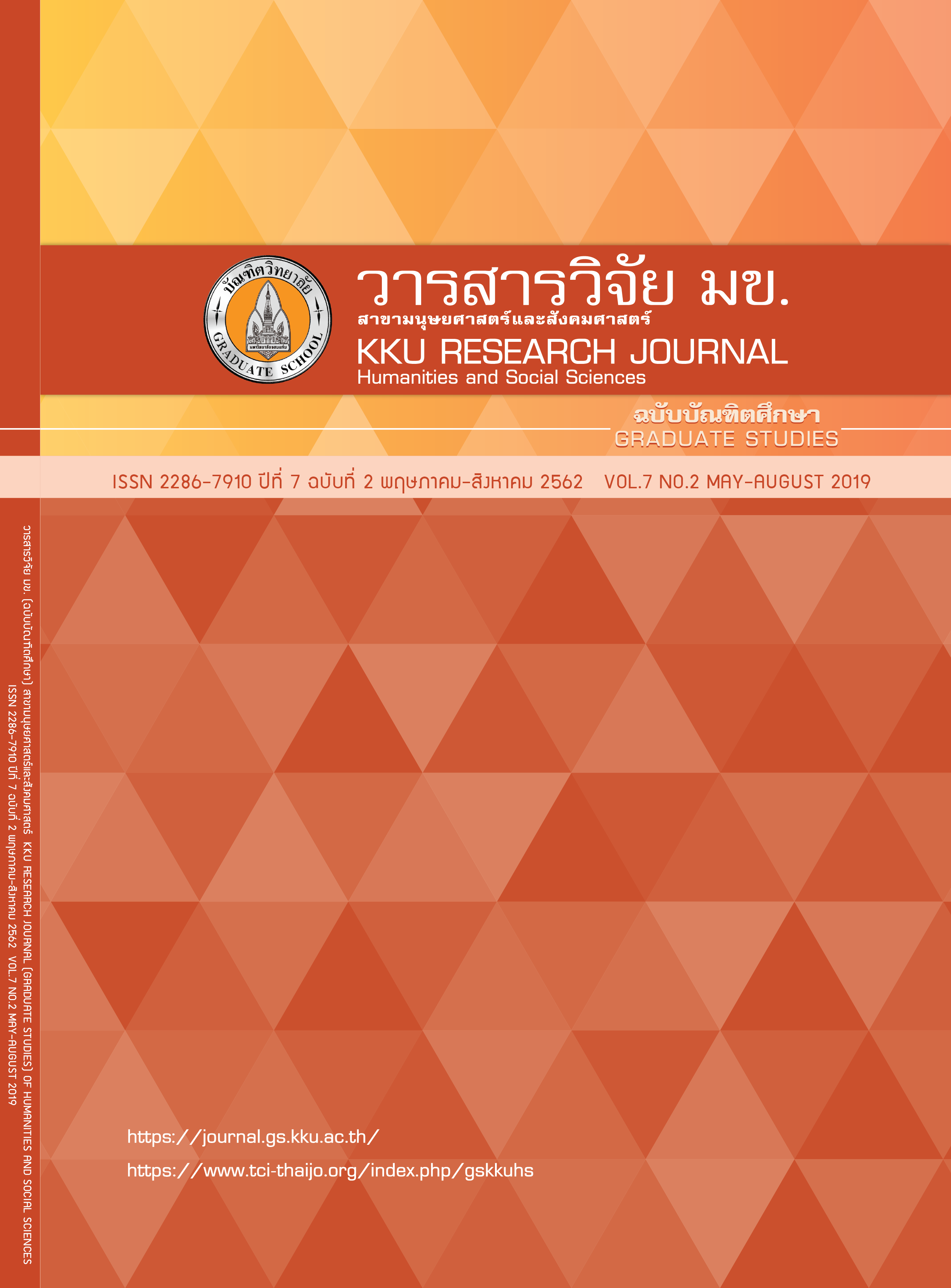Eleventh Graders’ Ability to Construct Representation of Galvanic Cell through Modelling-based Teaching
Keywords:
Representation ability, Modelling-based Teaching, Galvanic cellAbstract
This research aimed to study grade 11 students’ ability to construct representation of galvanic cell learned using modelling-based teaching which places an emphasis on creating, testing, and revising models. This study is an experimental research that collects qualitative data. The representation test and semi-structured interview were employed as data sources before and after an implementation of modelling-based teaching. The results showed that, after implementation, most of students’ ability to construct three levels of representations including macroscopic, submicroscopic, and symbolic levels were categorized at moderate. This level was higher than before implementation. Modelling-based teaching is an alternative way which helps chemistry teachers to reduce learning difficulty. Teachers should design activities to facilitate students to express and translate representation coherently and correctly.
References
electrochemistry by using model-centered instruction sequence. KKU Research Journal (Graduate Studies)
Graduate School, Khon Kaen University. 2015; 3(1), 82-92. Thai.
2. Tien T L, Osman K. Development of interactive multimedia module with pedagogical agent
(IMMPA) in the learning of electrochemistry: Needs assessment. Research Journal of
Applied Sciences, Engineering and Technology. 2013; 7(18): 3725-3732.
3. Supasorn S. Grade 12 students’ conceptual understanding and mental models of galvanic
cells before and after learning by using small-scale experiments in conjunction with a model kit.
Chemistry Education Research and Practice. 2015; 16(2): 393-407.
4. Lin H, Yang T, Chiu H, Chou C. Students’ Difficulties in Learning Electrochemistry.
Proceedings of the National Science Council, 2002; 12(3): 100 – 105.
5. Johnstone A. The development of chemistry teaching: A changing response to
changing demand. Journal of Chemical Education. 1993; 70(9), 701–705.
6. Karaçöp A. Effects of student teams-achievement divisions cooperative learning
with models on students’ understanding of electrochemical cells.International Education
Studies. 2016; 9(11): 1913-9039.
7. Jankran R, Pimtong P, Kaewwattana W. The development of grade 12 students'
representational competence about polymer using multiple representations.
Paper presented at the 34th National Academic Conference. 2015; 1659-1664.
Thai.
8. Michalchik V, Rosenquist A, Kozma R, Kreikemeier P, Schank P. Representational
resources for constructing shared understandings in the high school chemistry
classroom. In: Gilbert J, Reiner M, Nakhleh M (Eds) Visualization: Theory and
practice in science education, Springer, Dordrecht, 2008; 3: 233-282.
9. Kozma R, Russell J. Multimedia and understanding: Expert and novice
responses to different representations of chemical phenomena. Journal of
Research in Science Teaching, 1997; 43(9), 949-968.
10. Devetak I, GlaŽar S. Teachers’ influence on students’ motivation for learning
science with understanding. In: Roberta V. Nata (Ed) Progress in education.
Nova Science Publishers.2011; 19: 77-103.
11. Justi R. Learning how to model in science classroom: Key teacher’s roles in
supporting the development of students’ modelling skills. Educacion Quimica.
2009; 20(1): 32-40.
12. Jaber L, Boujaoude S. A Macro–Micro–Symbolic Teaching to Promote
Relational Understanding of Chemical Reactions. International Journal of
Science Education, 2012; 34(7): 973 – 998.
13. Gamett P, Treagust D. Difficulties experienced by senior high school
students of electrochemistry: Electric circuits and oxidation-reduction equations.
Journal of Research in Science Teaching, 1992; 29(2): 121-142.




